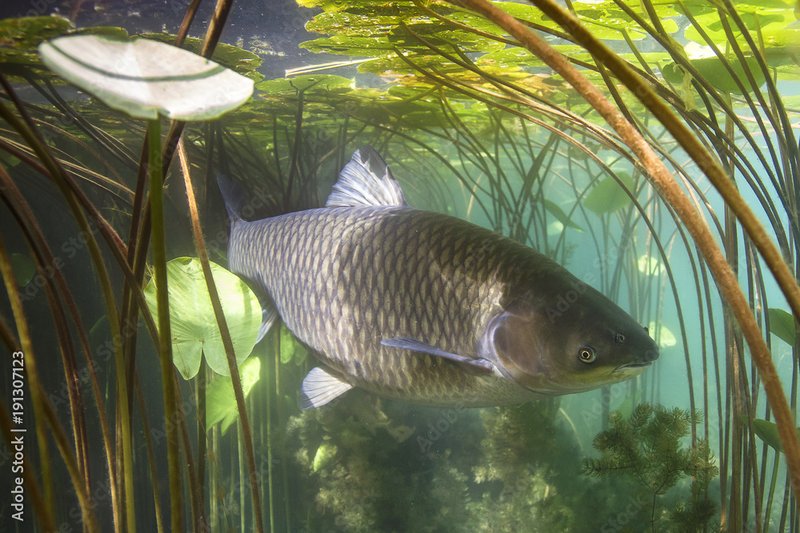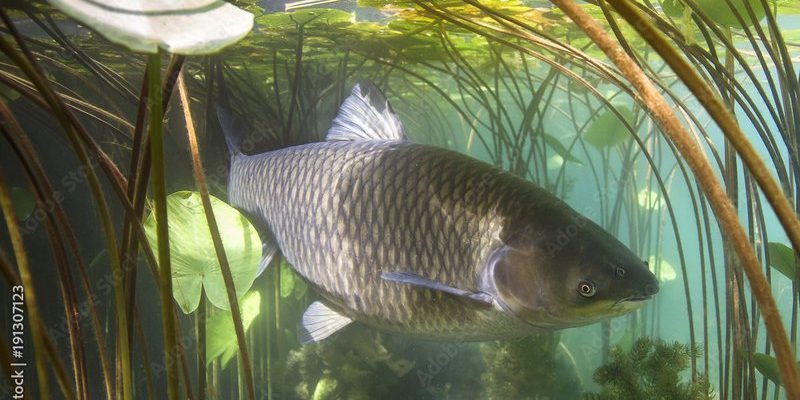
When you think of fish, you might picture bright-colored tropical species or maybe the sleek, fast swimmers of the ocean. But let’s take a moment to explore carp, a fish that often flies under the radar yet plays a significant role in many ecosystems and cultures around the world. These hardy fish come in many varieties and are often found in ponds, lakes, and rivers, thriving in environments where many other fish might struggle. If you’re curious about what makes carp so unique, you’re in for a treat!
Carp are more than just ordinary fish; they have fascinating behaviors, a diverse diet, and a rich history. Many people enjoy fishing for carp, and they also have importance in various cultures, especially in Asia and Europe. Whether you’re looking to understand how to care for them in an aquarium setting or hoping to catch one on your next fishing trip, learning about these fish can be quite rewarding.
What Are Carp?
Carp belong to the family Cyprinidae and are freshwater fish that can be found in various parts of the world. They are known for their robust bodies, often featuring a large, distinctive mouth. These fish can adapt well to different environments, making them versatile inhabitants of both wild and farmed waters. Typically, they grow to be quite large, with some species reaching over 60 pounds!
Originating from Asia, carp have been domesticated for centuries, especially in China, where they are a symbol of wealth and prosperity. The koi variety, for example, is celebrated for its stunning colors and patterns. In addition to their beauty, carp are recognized for their hardiness. They can survive in low oxygen levels and a variety of water conditions, giving them a significant edge over other fish species.
Common Species of Carp
There are several species of carp, each with unique characteristics. The most commonly known include:
- Common Carp (Cyprinus carpio): Often found in lakes and rivers, this species is the most popular for fishing.
- Koi: A domesticated variety of common carp, known for their bright colors and patterns, often kept in ornamental ponds.
- Mirror Carp: Recognizable by their large, irregular scales, they are favored in fishing because of their size and fighting spirit.
- Grass Carp: These are primarily herbivorous and help control aquatic vegetation in lakes and ponds.
- Ghost Carp: A less common variety, these fish are largely white, making them visually striking.
Carp Habitat and Distribution
Carp are incredibly adaptable fish, which is one reason they’ve established populations in various regions around the globe. Originally from East Asia, they have spread widely due to human introduction. You can find them in North America, Europe, and even Australia. They thrive in warm, shallow waters like lakes, ponds, and rivers, often preferring areas with muddy bottoms where they can forage for food.
In terms of habitat, carp enjoy areas with abundant vegetation, which provides both shelter and food. They often inhabit slow-moving or still waters, allowing them ample time to scour the bottom for nutrients. Warm waters are especially ideal for carp; this is when they become most active, seeking out food and breeding opportunities.
Diet and Feeding Habits
Carp are omnivorous, which means they eat almost anything they can find. Their diet typically includes aquatic plants, insects, crustaceans, and even small fish. They are known for their bottom-feeding behavior, often rummaging through mud and silt to find tasty morsels. This is why muddy or weedy areas tend to be prime spots for carp fishing!
One fascinating aspect of carp feeding is their ability to adapt to available food sources. In farmed settings, they can be fed a range of foods, from commercial pellets to grains, which allows for efficient growth. If you ever see carp feeding, it’s quite a sight; they often come to the surface, creating a spectacle as they gulp air and food alike. Watching their feeding frenzy can be almost mesmerizing!
Carp in Culture and History
Throughout history, carp have held a special place in many cultures. In Japan, for example, koi carp are symbols of strength and perseverance. They are often featured in festivals and decorations, and their vibrant colors are cherished by hobbyists around the world. In Chinese culture, the carp is seen as a symbol of luck and success, particularly during the Lunar New Year, when they represent prosperity.
Interestingly, carp have also been significant in a culinary context. In some regions, they are enjoyed as a delicacy—though their muddy taste has made them less popular in others. For those willing to prepare them correctly, carp can be quite tasty and are often featured in traditional dishes.
Physical Characteristics of Carp
Carp are easily recognizable thanks to their distinctive features. They have a robust, elongated body with thick, tough scales, which can come in various colors, including gold, gray, and dark green. Their large, broad mouths make it easy for them to sift through debris at the bottom of their habitats. Some species, such as koi, are bred for their vibrant colors and unique patterns, making them a favorite in ornamental ponds.
In terms of size, common carp can grow quite large, often reaching lengths of 20 to 40 inches, and some exceptional individual specimens weigh over 60 pounds. Besides their impressive size, carp are also known for their longevity; they can live for more than 20 years under optimal conditions. This long lifespan allows them to become quite a fixture in their environments, often forming complex social structures within their schools.
Fishing for Carp
If you’re thinking about fishing for carp, you’re in for a unique experience. They are known for their strength and can put up quite a fight, making them an exciting target for anglers. Many people enjoy carp fishing for both sport and food. In fact, carp fishing tournaments are quite popular in various regions, often drawing in many participants eager to showcase their skills.
To successfully catch carp, you’ll want to use the right bait. Common options include corn, dough balls, and specially formulated carp baits that mimic their natural food sources. Many anglers prefer to fish during the early morning or late evening when carp are most active. It’s essential to be patient, as carp can sometimes take their time to nibble at the bait before actually biting down.
Environmental Impact of Carp
While carp are fascinating and resilient species, they can have significant impacts on local ecosystems. In many places, particularly in the United States, carp are considered an invasive species. Their feeding habits can disturb sediment and uproot aquatic plants, leading to higher levels of turbidity in the water and negatively affecting native fish populations.
When ecosystems are disrupted, it can lead to a decline in biodiversity. This is why managing carp populations in certain areas is crucial. Some regions have implemented measures to control their numbers, including fishing restrictions and promotion of native species. It’s a delicate balance—while carp can often coexist with other species, their presence can sometimes tip the scales in favor of disruptions.
Caring for Carp at Home
If you’re considering having carp as pets, you’re in for a rewarding endeavor. Common carp can be kept in large outdoor ponds, where they can flourish, or in large aquariums if you have the appropriate setup. One of the keys to a healthy carp environment is ensuring they have enough space, as these fish can grow quite large.
Maintaining good water quality is also critical. Carp produce a significant amount of waste, so proper filtration and frequent water changes are necessary to keep the environment clean. You’ll also want to provide a varied diet to ensure they receive all the nutrients they need to thrive. If you have koi, remember that they can live in harmony with various aquatic plants, which can complement their beautiful aesthetic.
Table: Quick Facts About Carp
| Species | Common Carp, Koi, Mirror Carp, Grass Carp, Ghost Carp |
| Size | 20-40 inches, some over 60 pounds |
| Lifespan | Up to 20 years |
| Diet | Omnivorous, feeds on plants, insects, and small fish |
| Habitat | Lakes, ponds, rivers; prefers warm, shallow waters |
| Distribution | Global, originally from Asia |
| Breeding | Spawns in warm, shallow waters during spring and summer |
FAQ
What do carp eat in the wild?
Carp are omnivores, meaning they consume a wide range of food. In the wild, they typically eat aquatic plants, insects, small crustaceans, and even detritus found at the bottom of their habitats. This adaptability in diet allows them to thrive in various environments.
Can carp be kept in aquariums?
Yes, carp can be kept in aquariums, but they require large tanks due to their size and nature. It’s essential to provide good filtration and plenty of space, as carp can produce a lot of waste. Many fish enthusiasts prefer to keep koi in outdoor ponds, where they can grow and thrive.
How can I identify different species of carp?
Different species of carp can be identified by their size, color, and physical characteristics. For example, koi are known for their vibrant colors and patterns, while mirror carp have fewer scales. Observing their behavior and habitat can also help in identifying species.
Are carp good for fishing?
Absolutely! Carp are popular among anglers due to their size and strength, often providing a thrilling fishing experience. Whether you are an experienced fisherman or a novice, carp can be a rewarding catch that offers both sport and sustenance.
What impact do carp have on local ecosystems?
Carp can have both positive and negative effects on local ecosystems. While they can contribute to some biodiversity, in certain areas, they are considered invasive species. Their feeding habits can disrupt sediment and plant life, leading to challenges for native fish populations. Proper management is key to maintaining ecological balance.
What is the best time to fish for carp?
The best time to fish for carp is typically during the early morning or late evening when they are most active. During warmer months, they tend to feed more frequently, making these times ideal for anglers hoping to catch them.
How long can carp live?
Carp can live for a surprisingly long time, often reaching lifespans of up to 20 years, especially in a controlled environment where they are cared for properly. This longevity allows for interesting developments in their behavior and interactions over the years.
Can carp be eaten, and how do I prepare them?
Yes, carp can be eaten, though they are less popular than other fish due to their muddy taste. Preparing carp properly is crucial for better flavor—cleaning, cooking, and seasoning can make a significant difference in the taste. Many enjoy smoked or grilled carp when prepared well.
Are there any special considerations for keeping koi?
When keeping koi, ensure they have a sufficient size pond with good filtration. Koi thrive in environments where they have ample space to swim, as well as plenty of plants for both shelter and food. Regular water quality checks are essential for maintaining their health.
How do I catch carp effectively?
To catch carp effectively, use bait that appeals to them, such as corn or dough balls. Patience is key, as they may nibble before taking the bait. Fishing during peak activity hours, using the right gear, and finding the right spots will also improve your chances of landing a catch.
What role do carp play in aquaculture?
Carp are significant in aquaculture due to their rapid growth and high adaptability. They are often farmed for food, providing a source of protein in many cultures. Understanding their needs and managing their populations can make aquaculture a sustainable practice.

